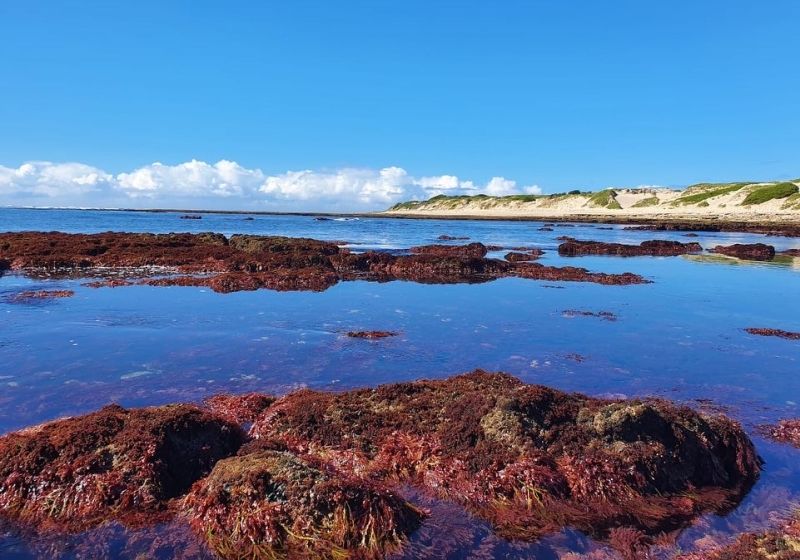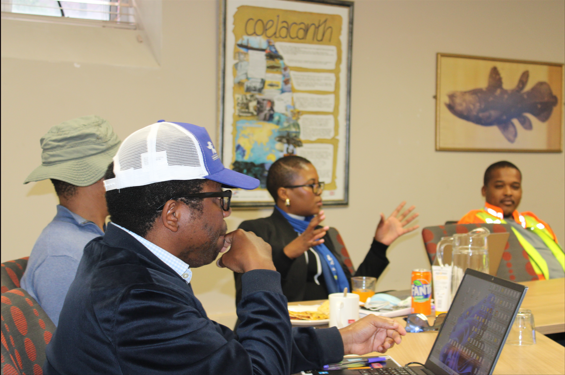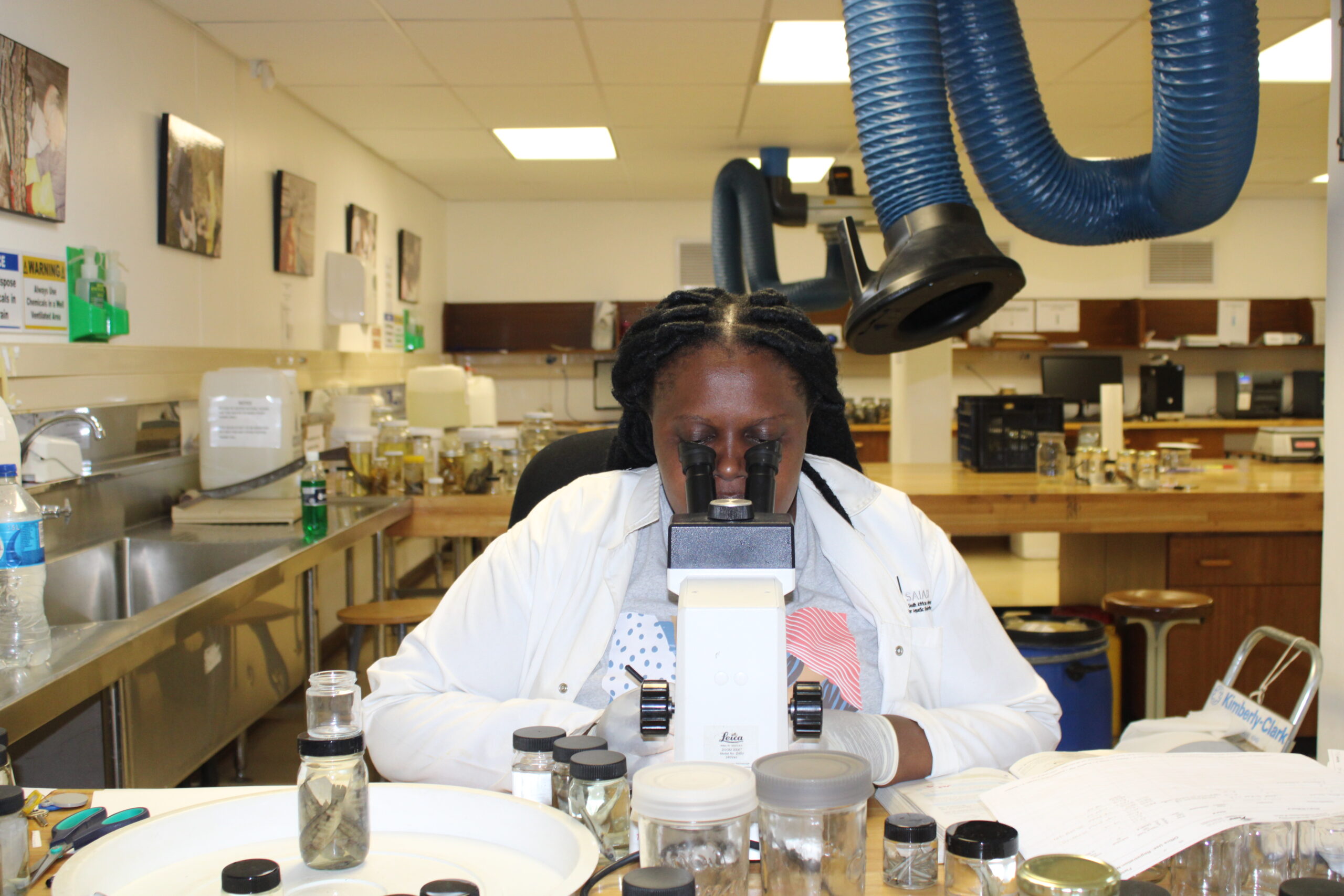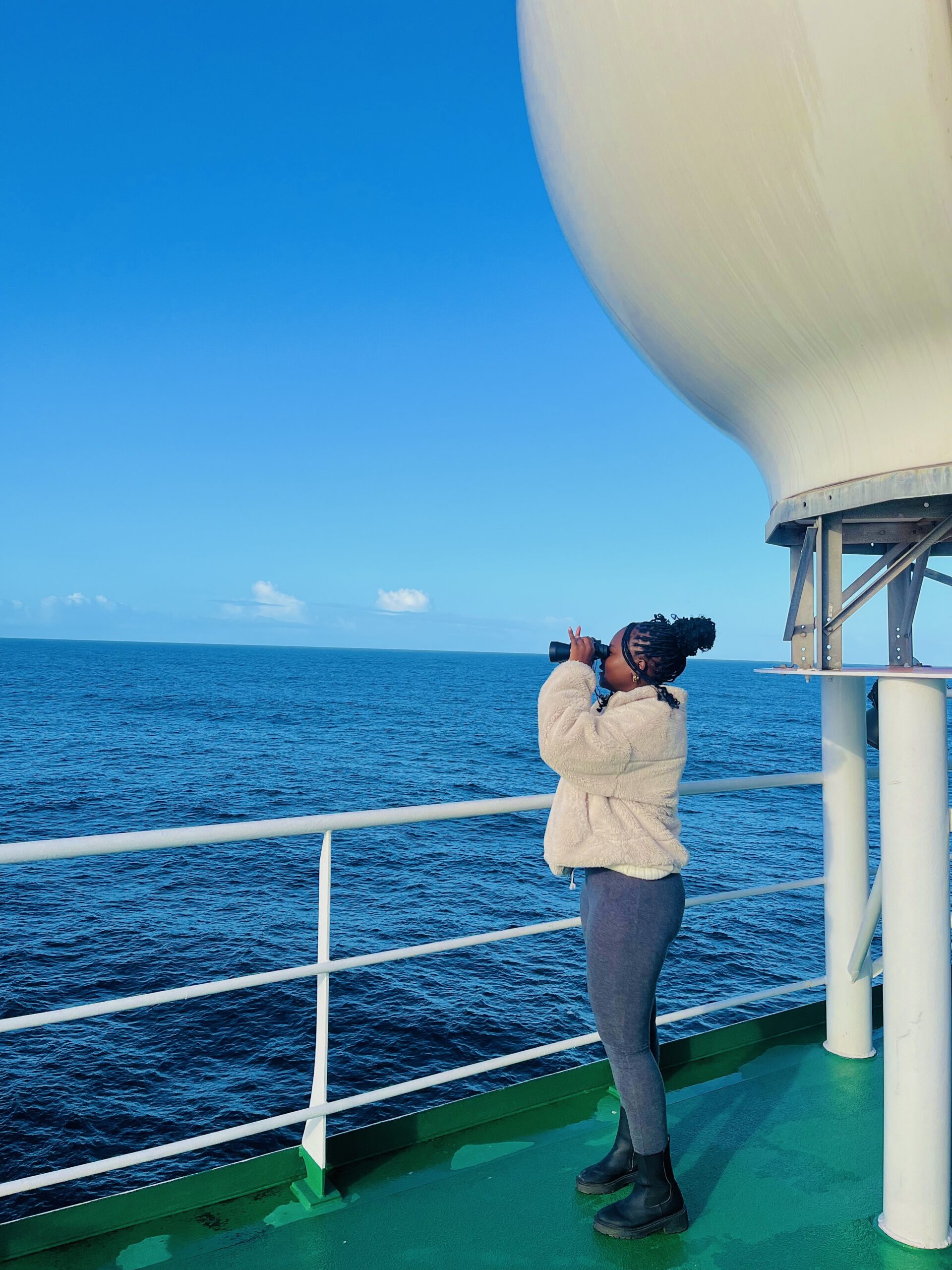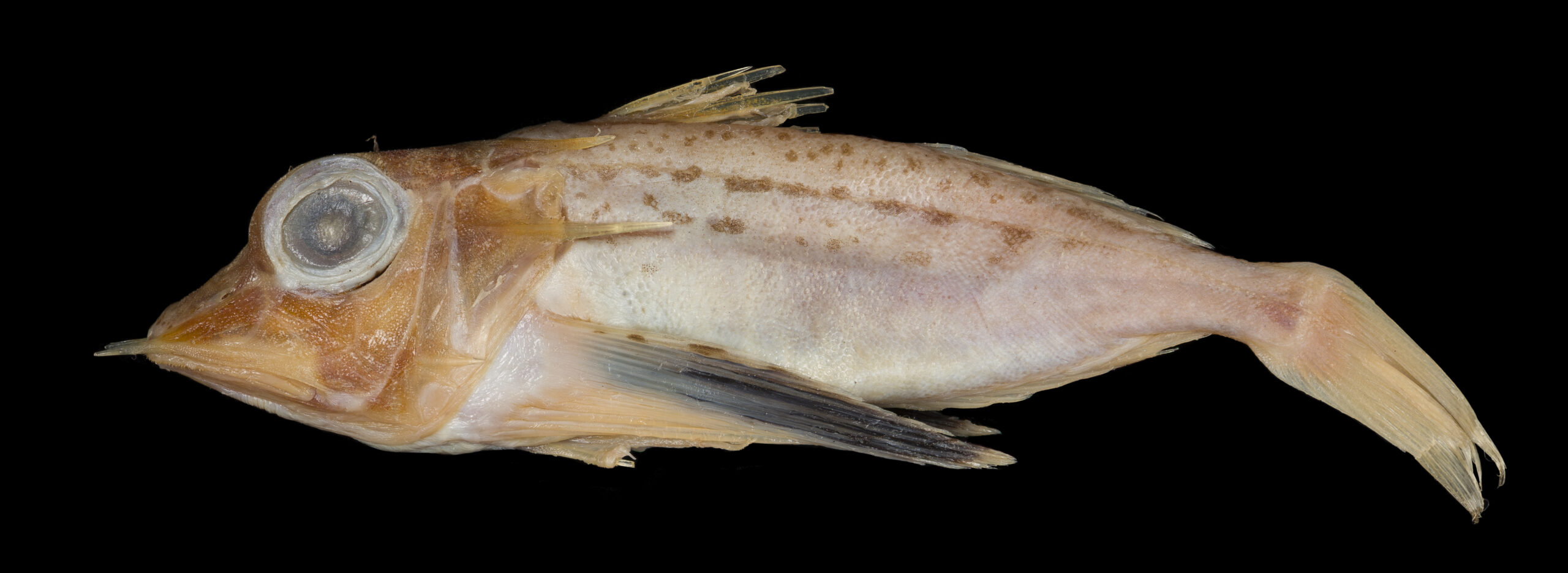By: Nicola James, Lucienne Human and Gavin Rishworth, SAIAB, SAEON Elwandle Node and Nelson Mandela University

One of the most critical ecosystem functions provided by shallow coastal habitats is as nurseries for the juveniles of marine fish, many of which are targeted in fisheries as larger adults.
Fish nursery habitats are distinct from adult habitats and are where juveniles are abundant and more so than in other areas. Nursery habitats provide protection from predators so that fish can survive and allow fast growth through the provision of lots of food.
Structurally complex macroalgal (seaweed) dominated reefs within coastal seascapes are important as nursery areas for many marine fish species, as they enhance density, growth and survival of juveniles through protection from predators and the provision of food. Although several algal species may perform similar nursery functions, the nursery provision of canopy-forming brown algae (Sargassum, Cystoseira and kelp) has been the focus of research globally, with almost no research on structurally complex red and green algae (see image above from James and Whitfield 2022).
Seascape Ecology Research Group
To address this important research gap, researchers from the Seascape Ecology Research Group* examined the nursery role of a mosaic of red algae dominated habitats in a shallow (< 5 m), sheltered rocky cove in warm-temperate Algoa Bay, where red algae proliferate (Figure 1).
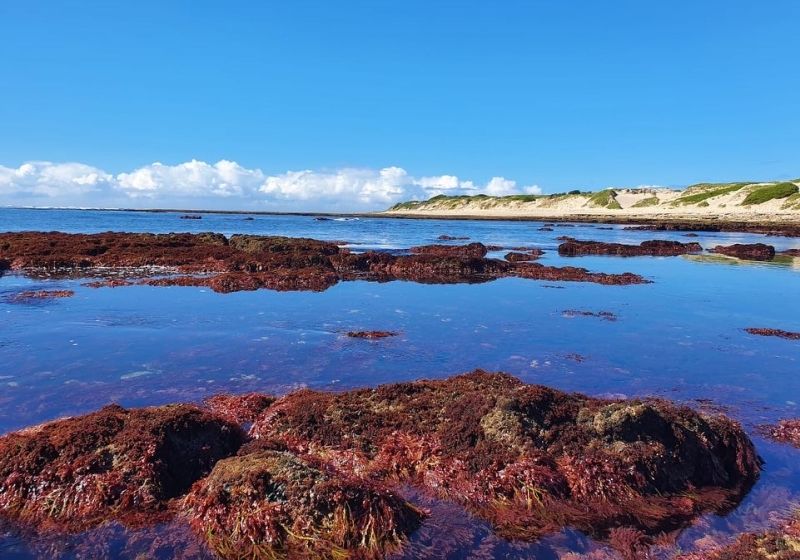
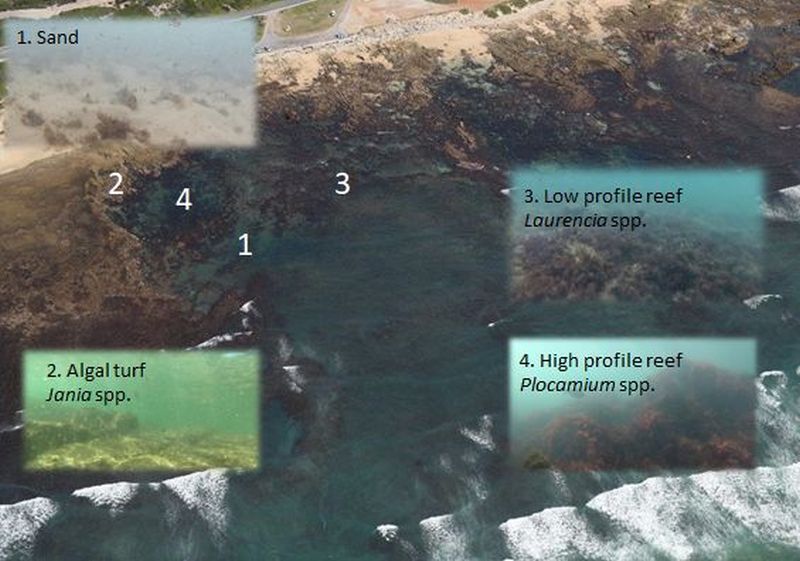
As an indicator of nursery function within the cove, researchers assessed and mapped macroalgal communities and complexity of different habitat patches (sand, algal turf, low-profile reef and high-profile reef – Figure 2), the resources/food available for fish, fish assemblages (abundance, size structure and species richness) and the diet and behaviour of dominant juvenile fish species within the cove.
Red algae, particularly the structurally complex canopy forming Plocamium spp. (up to 30 cm tall) and the lower growing Laurencia spp. (up to 10 cm tall), dominated subtidal high- and low-profile reef respectively, with intertidal reef flats dominated by low growing coralline turf (Jania spp.). Contrary to studies in the Mediterranean, where structurally complex Cystoseira spp. dominated reef has more invertebrate prey as well as a threefold greater abundance of juvenile fishes than low growing algal shrub land and turf, structural complexity was negatively correlated with the biomass of resources, with the biomass of epiphytic algae and amphipods highest on coralline (Jania spp.) turf and low growing Laurencia spp. (Figure 3).
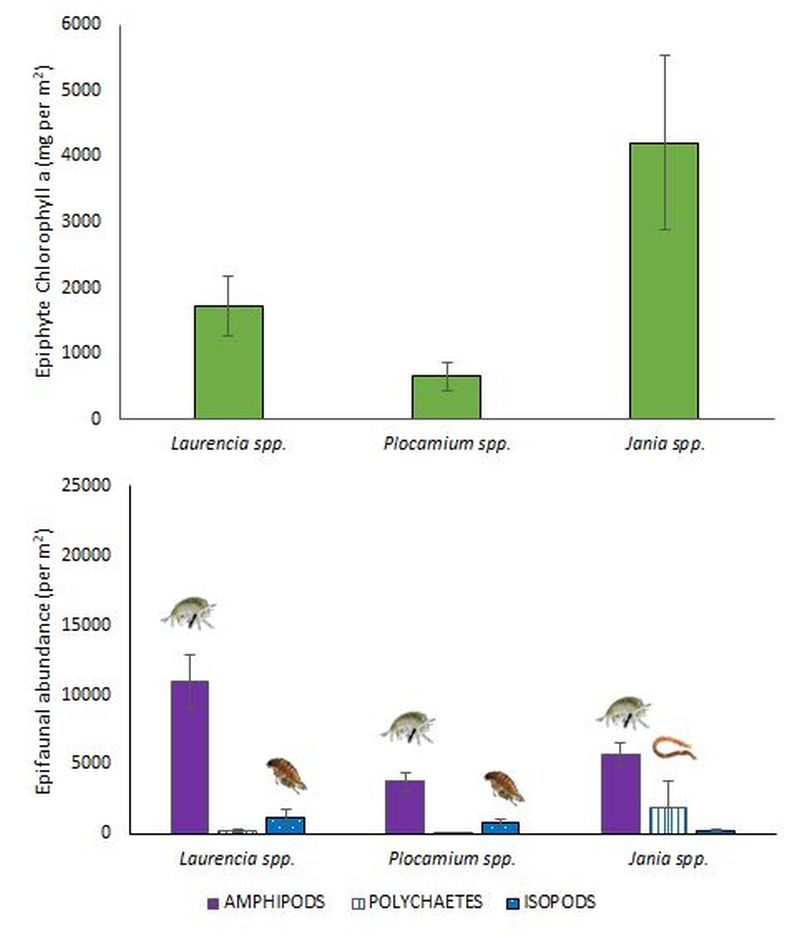
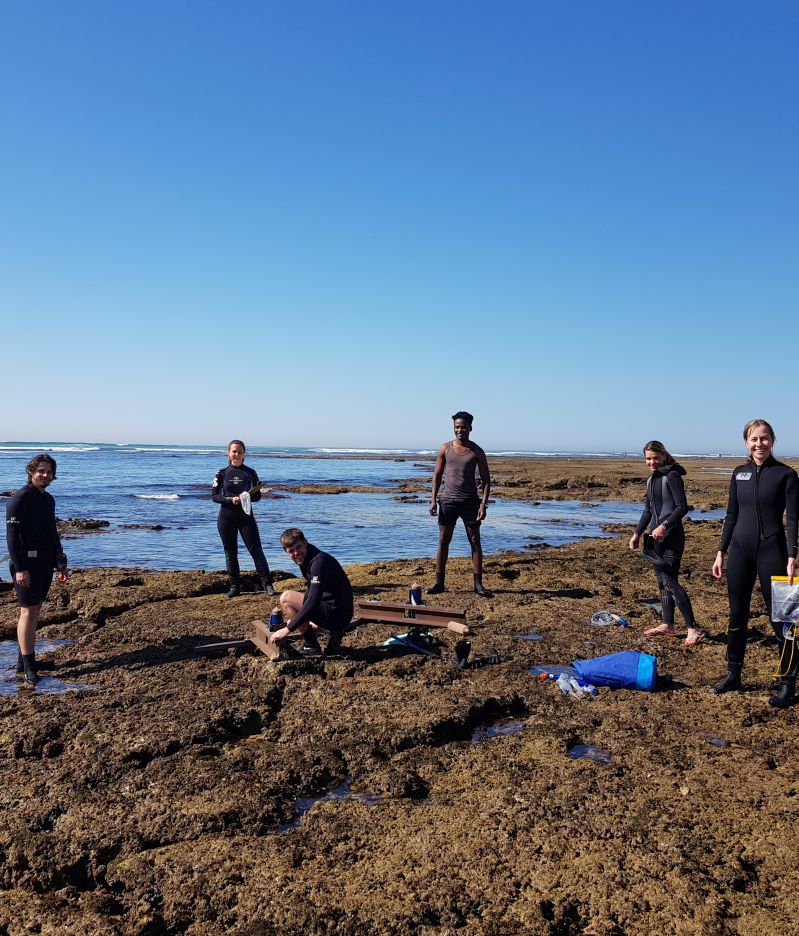
The abundance and species richness of fishes did not differ between habitat patches of differing complexity, with young-of-the-year (fish less than a year old) sparids or seabreams, particularly strepie Sarpa salpa, blacktail Diplodus capensis and zebra Diplodus hottentotus, occurring in high numbers throughout the cove (Figure 4).
Young-of-the-year Diplodus capensis was omnivorous, feeding mainly on epiphytic algae, amphipods and other invertebrates (which are found throughout the cove) as well as unidentified seaweed. Young-of-the-year Sarpa salpa was mainly herbivorous, feeding on Laurencia spp., Plocamium spp., Jania spp. algal turf, epiphytes and a small proportion of invertebrates (amphipods and polychaetes) (Figure 5). As a result of their algal diet, Sarpa salpa were mainly observed feeding in structured habitat (low- and high-profile reef) (Figure 6).
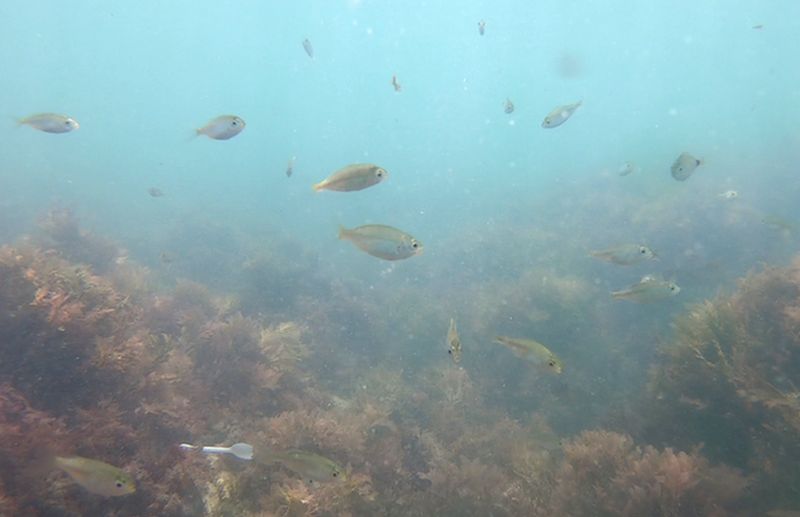
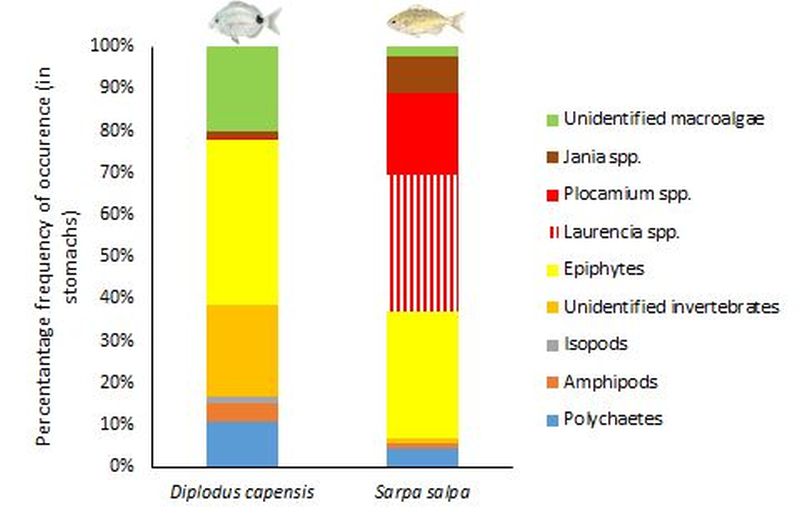
This research highlights the importance of sheltered red-macroalgae reef as a nursery for marine fish within a warm-temperate seascape and adds to our body of knowledge on the nursery function of macroalgae (with previous research focused on brown algae).
Macroalgae in this cove provided protection from predators so that fish survive, and this is probably truer of the structurally complex Plocamium in the high-profile reef. Macroalgae also allows fast growth through the provision of food – in this case with the lower complexity algae providing more food than more structurally complex macroalgae. This shows that macroalgal habitats comprising several functional forms have the potential to support higher juvenile diversity and abundance.
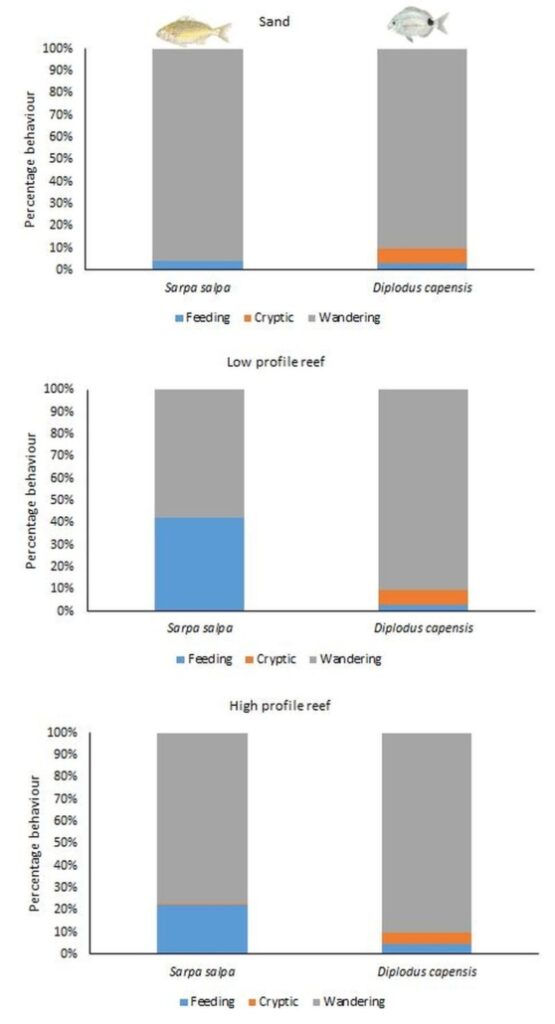
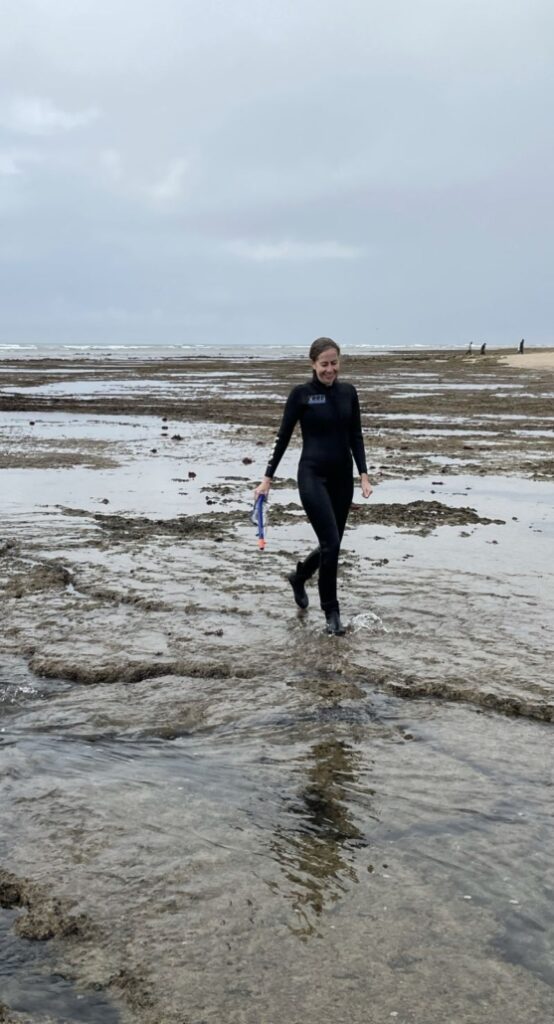
Further reading
Cheminée, A., Pastor, J., Bianchimani, O., Thiriet, P., Sala, E., Cottalorda, J-M., Lejeune, P. and Francour, P. 2017. Juvenile fish assemblages in temperate rocky reefs are shaped by the presence of macro-algae canopy and its three-dimensional structure. Scientific Reports 7, 14638.
James, N.C. and Whitfield, A.K. 2022. The role of macroalgae as nursery areas for fish species within coastal seascapes. Cambridge Prisms: Coastal Futures, 1–27.
……………………………………………………………………………………………………………………………………………………………………………………..
* Prof Nicola James (SAIAB), Dr Lucienne Human (SAEON), Mr Aidan Jacobs (Nelson Mandela University), Mr Mihle Gayiza (Rhodes University), Dr Gavin Rishworth (Nelson Mandela University), Dr Paul-Pierre Steyn (Nelson Mandela University) and Dr Anthony Bernard (SAIAB)
(This article was republished from the NRF-SAEON newsletter: https://enews.saeon.ac.za/issue-02-2023/nursery-role-of-red-algae-dominated-reef-in-temperate-algoa-bay/)
